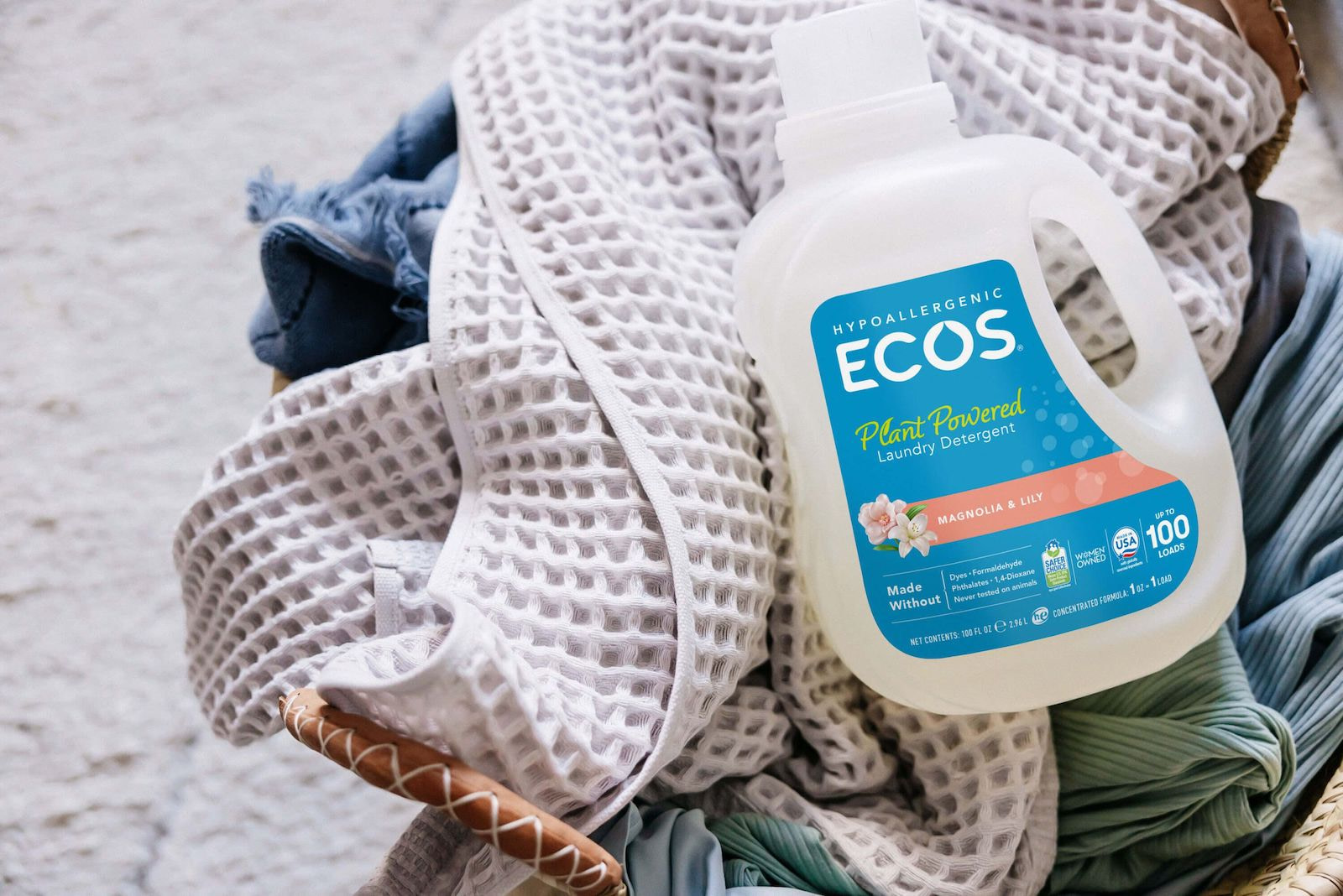7 Common Toxins Found in Laundry Detergent
6 minute read

Many are surprised to discover the number of toxic ingredients that can be found in some laundry detergents. Today’s leading laundry detergents often contain carcinogens, toxins, and other harmful compounds. We want to help improve the safety of your home. Today, we’re highlighting some of the most common toxins found in laundry detergents:
Scented Laundry Detergent Can Emit Hazardous Chemicals
A University of Washington study found many popular laundry detergents were packed with toxins. Scented laundry detergents were particularly problematic. Many of the chemicals used to create scents in laundry detergents are considered carcinogens.
The report even found scented laundry products spread hazardous chemicals through dryer vents, which could spread toxins throughout your home and surrounding environment.
Scented laundry detergents may smell nice. However, many companies combine hundreds of chemicals to create those scents. You may assume your laundry detergent smells like natural orange or lavender – but it could really be packed with chemicals linked to disease and illness.
Surfactants Could Damage Mucus Membranes and Lungs
Many laundry detergents use surfactants like petroleum distillate or naphtha. These surfactants can boost the cleaning power of laundry detergent. However, they also can damage mucus membranes and lungs, which could lead to serious respiratory problems. These surfactants increase inflammation in the lungs, and have even been linked to an increased risk of asthma and cancer.
Other laundry detergents use phenol as a surfactant. Phenol appears to be even more harmful than petroleum distillate or naphtha. Many people are allergic to phenol. In fact, phenol exposure can cause death in some individuals. When it contacts your skin, it can permeate your body to impact organs, your nervous system, and other critical components.
1,4-dioxane Could Increase Cancer Risk
1,4-dioxane is a known human carcinogen and neurotoxin that is always present in trace amounts when ethoxylated surfactants are used. Ethoxylated surfactants are made by a chemical process where ethylene oxide reacts with other chemicals to create a surfactant. The problem is that this process can create 1,4 -dioxane as a byproduct.
In studies on rats, researchers have found 1,4-dioxane increases the risk of benign and malignant tumors throughout the body.
1,4-dioxane is never listed on labels because it’s not an intentionally added ingredient, but there are some easy tricks to avoid it. Ethoxylated surfactants usually follow a few naming conventions. If the ingredient ends in “-eth”, such as laureth-6 or sodium laureth sulfate (SLES), ceteareth or steareth, it’s ethoxylated.

Phthalates Are Linked to Endocrine Disruption and Hormone Imbalance
Phthalates make scents last longer. While many manufacturers now claim their products are phthalate-free, others continue to sneakily use phthalates in their products. Their label simply says “fragrance,” although they include phthalates under this label.
Some studies have linked phthalates to endocrine disruption, which can impact your hormones, increase your risk of cancer, and affect fertility, among other serious health concerns.
Bleach Is Hidden Under Alternative Names and Could Cause Skin Problems
It’s no secret bleach is harmful to human health. However, it’s often used to brighten clothes.
Today, many manufacturers hide bleach behind terms like “sodium hypochlorite,” “optical brightener,” or “UV brightener.”
No matter what you call it, bleach can be harmful to human health. When bleach hits your skin, it can cause an allergic reaction. It can also irritate the eyes and lungs.
Nonylphenol Ethoxylates (NPEs) Are Still Found in the United States, But Banned in the EU
Banned in the European Union (EU) and Canada, nonylphenol ethoxylate (NPEs) are commonly found in American laundry detergents – despite the risk of endocrine disruption, which could impact hormones, fertility, and overall health.
Studies show NPEs negatively impact physical function and fetal development. Children are particularly vulnerable, and NPEs could significantly impact growth and organ function.

Formaldehyde Can Irritate the Skin, Eyes, and Lungs
Formaldehyde is used as a low-cost preservative and antibacterial agent. It’s found in laundry detergents and dishwashing liquid.
Formaldehyde may be an effective antibacterial agent, but it can also irritate the eyes, lungs, and other parts of your respiratory system. Some studies have linked formaldehyde to eczema, while others consider formaldehyde a carcinogen.
Other Harmful Substances
The average laundry detergent is packed with harmful toxins and substances. Other harmful ingredients potentially found in your laundry detergent include:
- Dyes
- Benzyl acetate
- Dichlorobenzene (P-dichlorobenzene / benzene)
- Ammonium sulfate
- Ethylenediaminetetraacetic acid (EDTA)
Symptoms of Exposure to Laundry Detergent Toxins
If you have been exposed to toxins in laundry detergent, then you could experience a range of symptoms – from rashes to low energy.
Some symptoms linked to the toxins in laundry detergents include:
- Skin problems, including rashes and redness
- Headaches
- Hormone disruption
- Respiratory problems
- Immune dysfunction
- Nervous system issues, infertility, vision loss, organ damage, cancer, and other health problems
Overall, exposure to the toxic substances in laundry detergent could increase your risk of serious health problems – from energy problems to cancer.

ECOS Is an Eco-Conscious Laundry Detergent Made with Safer Ingredients
All ECOS laundry detergents and other laundry products are made with safer ingredients.
ECOS laundry products are made without dyes, formaldehyde, 1,4 dioxane, parabens, phosphates, phthalates, pearlizers, and optical brighteners, or hundreds of other harmful ingredients. For an extensive guide into how to look for these nasties in your cleaning product, use this tool.
Plus, our laundry detergents also have our formula is 100% vegan formulas and feature recyclable packaging.
Whether in liquid, packs, or sheets, you can get the eco-conscious laundry products you need from ECOS today.
